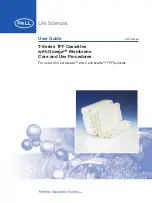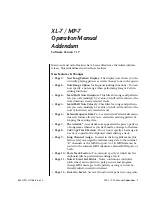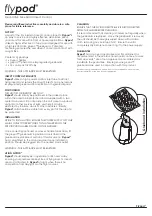
- 54 -
Disturbances
12
Disturbances
This chapter describes possible causes for disturbances and measures for their removal. In case of increased
disturbances, please follow the measures for fault clearance in chapter 12.5.
In case of disturbances that cannot be eliminated by following the advice and the fault clearance measures giv-
en here, please contact the manufacturer (see second page).
12.1
Error in Position Determination
If no tape is present or if the magnetic information on the tape cannot be read unambiguously and consistently,
the sensor switches into error mode. No valid position information is transmitted anymore; instead, a request for
transition into safe state is transmitted and the corresponding status information is set in the status bits.
This state is not reset even if the tape is detected again later on and the position sequence is correct again. This
mode is only reset after a complete re-start (incl. battery voltage).
Further information:
Requirements specific to the protocol for transition into safe state:
12.2
Non-severe Errors
If an error is detected that does not jeopardize the internal programme sequence, the error is transmitted to the
evaluation unit via external interface. The transmission happens in two steps.
12.2.1
Step 1
–
Short-Term Interference
During the first step it is assumed that the interference is only a short-term one. In this stage, the request for
transition into safe state is transmitted via external interface. The type of signalling is described in the chapter
Request for Transition into Safe State
(
9.5.4) of the interface in question. In order not to lengthen the reaction
time, the request is first sent immediately after the error occurred.
12.2.2
Step 2
–
Long-Term Interference
If the error is still present after 15 seconds, it is safe to assume that there is a serious interference whose causes
should be checked and evaluated by an expert. In this case, the request for transition into safe state is transmit-
ted permanently. This type of error signalling requests the evaluation unit to sustain the safe state until it has
been analyzed and if necessary acknowledged by an expert.
If the error disappears again, the sensor will again begin to send valid position data, no matter if it was a long-
term or a short-term interference.











































